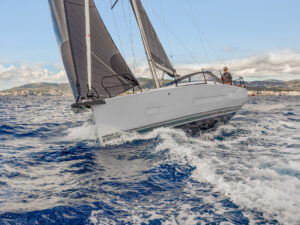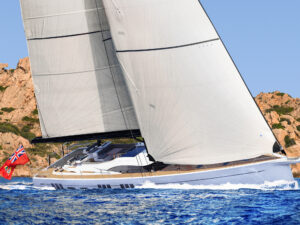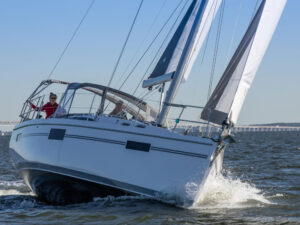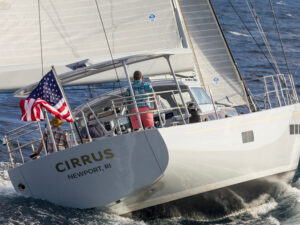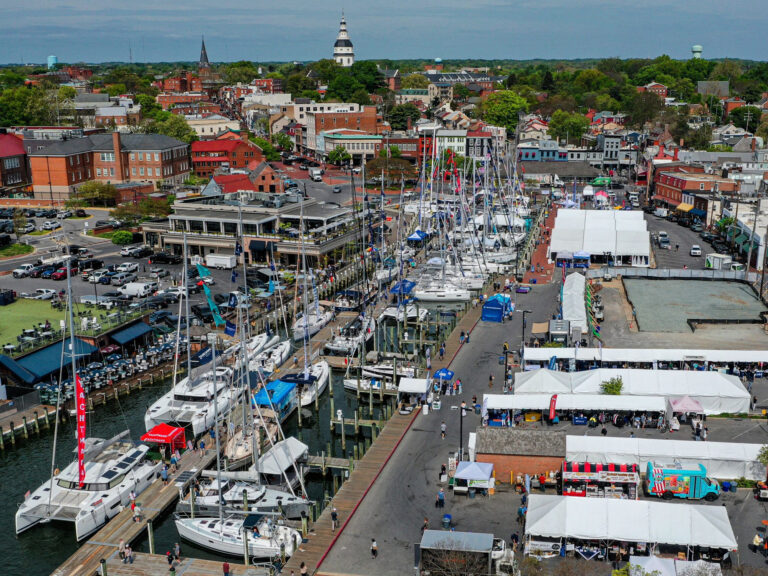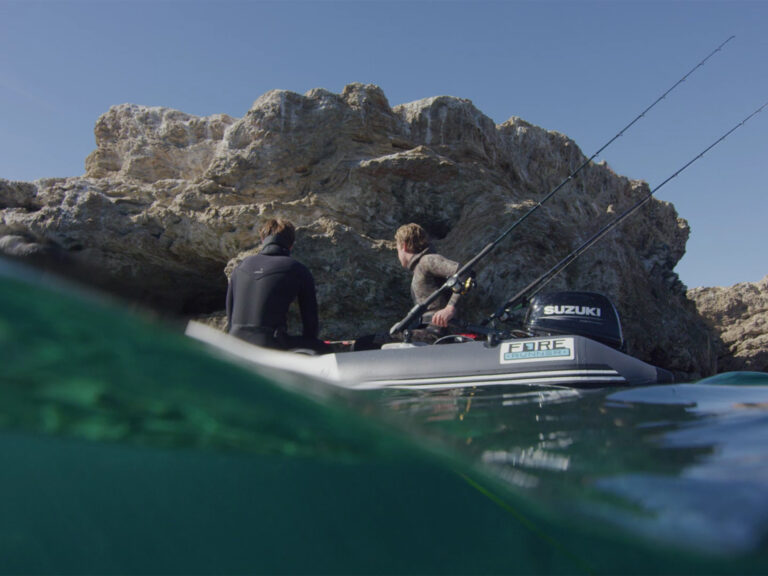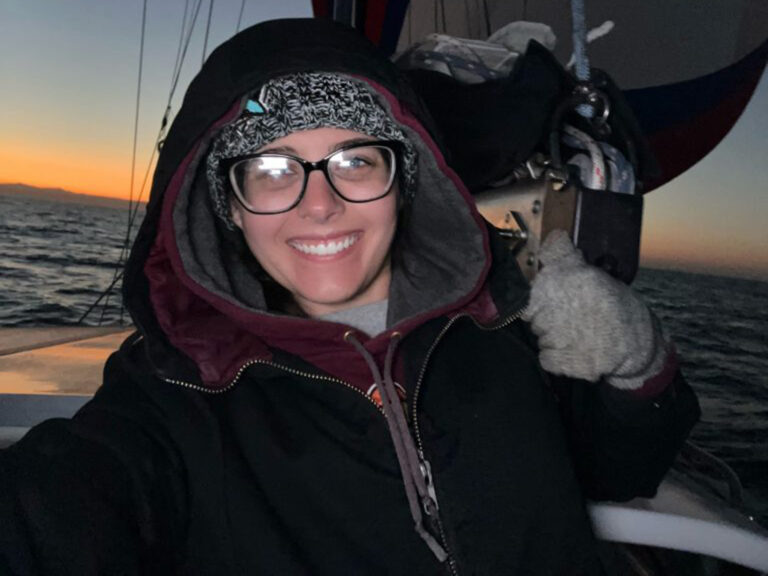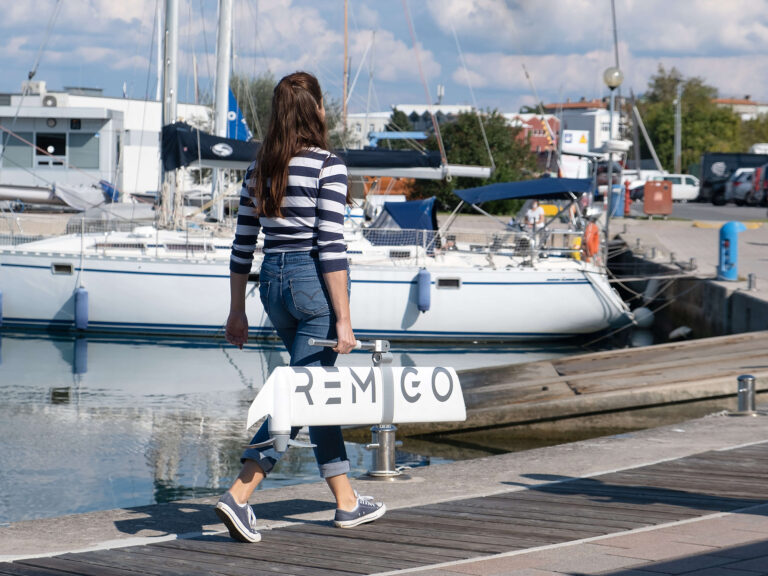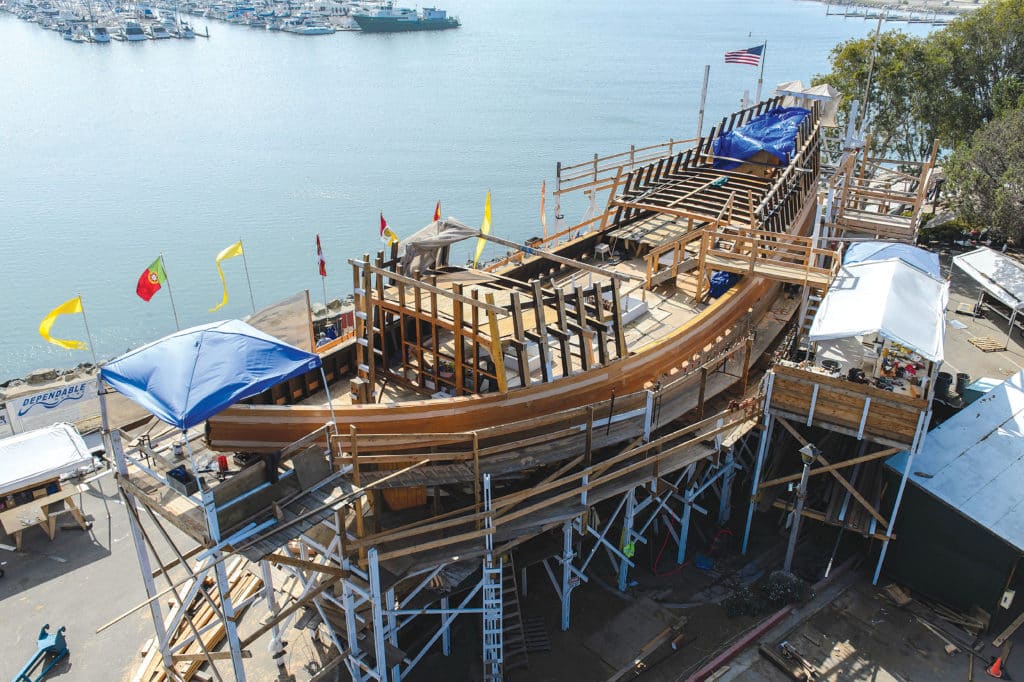
In the mid-1500s, on a beach of what is now Guatemala, Spanish explorer Juan Rodriguez Cabrillo put the finishing touches on his 100-foot galleon, San Salvador. Soon, under Cabrillo’s command, she became the first ship to land on the shore of what is now San Diego.
Nearly 500 years later, an empty parking lot at Spanish Landing Park, hard by San Diego Bay, has been transformed into a 16th-century shipyard, and a second San Salvador is taking shape alongside the Pacific coast, just like the first one. As Yogi would say, “It’s déjà vu all over again.”
The ambitious $6 million program is unfolding under the auspices of the San Diego Maritime Museum, but it has also become a labor of love for a dedicated workforce of professional boatbuilders and local volunteers. One of the pros is San Diego-based naval architect Doug Sharp, a museum trustee who was originally drafted to make sure the ship’s scantlings met U.S. Coast Guard regulations. Before long, however, Sharp became involved with the actual design of the second San Salvador, which proved to be a challenge. That’s because the original San Salvador was lost at sea, and there are no plans of the ship in existence.
For Sharp, piecing together the lines became, he said, “a forensic exercise,” a nautical mystery along the lines of “CSI: San Diego.”
“We started with a group of Spanish scholars, naval archeologists, and experts on various bits and pieces of Spanish history from the period,” said Sharp. “We took what we knew about later galleons, built in Spain between 1588 and 1600, and worked backward to envision what this ship would’ve looked like had she been built 40 years earlier in the New World. The one bit of evidence we had from the Cabrillo expedition was that San Salvador was a 200-tonelada [ton] merchant galleon. So we were able to ferret out the formula for a ship of that size and that gave us the basic length, breadth and depth of the ship.”
Regarding building materials, the team had no idea exactly what kinds of woods Cabrillo employed. But they were obviously tropical hardwoods, and among the hundreds of thousands of pounds of timber going into San Salvador’s construction, the crew is using sapele, from Africa, for the stem and hull planking, and South American angelique and purpleheart for the keel, sternpost, floors and keelson. The double-sawn hull frames are made from 65,000 pounds of Southern live oak, sourced from a forest in Georgia; it’s the same hard, dense wood used to build U.S.S. Constitution, and it’s also where the frigate got her nickname: “Old Ironsides.”
A dozen veteran boatbuilders, led by shipwrights Frank Townsend and Peter Wilson, were recruited for the project, but it wouldn’t be coming together without the more than 220 volunteers who have also become involved. On any given day, anywhere from a handful of people to three-dozen volunteers are at work on San Salvador.
“We have chemical engineers, nuclear physicists, schoolteachers, business executives — people from all walks of life,” said Sharp. “They show up and say, ‘I have no idea what to do, just put me to work, I’m happy to be here.’ Before you know it, they’ve picked up a skill required for shipbuilding. We’ve got folks caulking seams, shaping wood, building blocks. Time and time again, I hear people say, ‘I had no idea I had these skills before I volunteered here.’”
Before all is said and done, roughly 190,000 hours of work will have gone into building San Salvador, split almost equally between the pros and the volunteers.
If all goes according to plan, the ship will be launched this summer, after which the three masts will be stepped and rigged. By this time next year, she should be sailing. Cabrillo may have left few hard clues about his flagship, but it appears he passed along something even better: inspiration.

